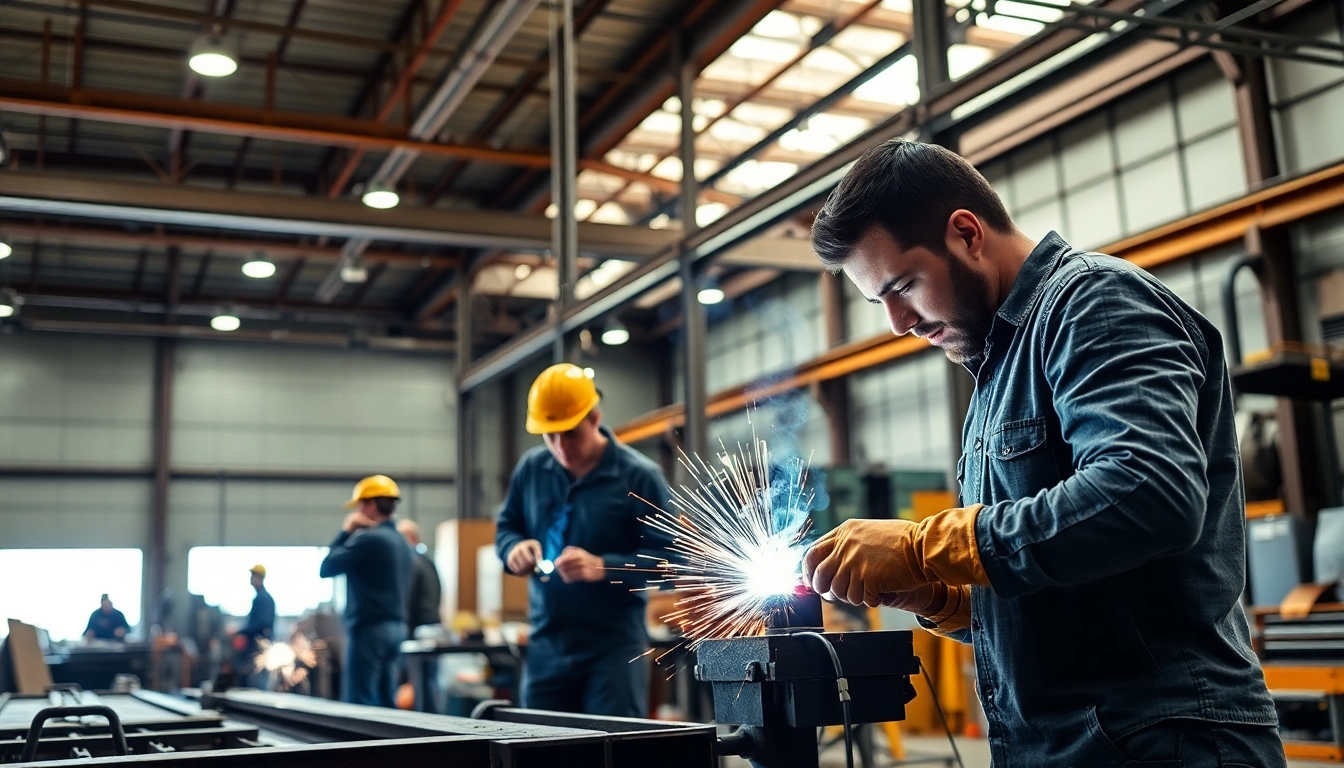Understanding the Austin Construction Landscape
Austin, Texas, known for its vibrant culture and booming tech industry, is experiencing significant growth in its construction sector. Various initiatives—both in residential and commercial spaces—are shaping the city’s skyline and infrastructure. This growth reflects larger trends in urban development and sustainability, packed with opportunities for construction professionals and firms alike. To start to grasp the complexities of austin construction, it’s essential to understand the underlying dynamics of this evolving landscape.
Current Trends in Austin Construction
Austin’s construction scene is marked by several key trends that not only reflect current consumer preferences but also broader global movements toward sustainability and efficiency. Among these trends are:
- Sustainable Building Practices: An increasing number of projects are being designed with sustainability in mind, integrating renewable energy sources and eco-friendly materials.
- Smart Technology Integration: The rise of smart homes and buildings equipped with advanced technology is becoming more prevalent, allowing residents to control various aspects of their living environment through mobile applications.
- Density and Mixed-Use Developments: As urbanization continues, more mixed-use developments are being constructed, allowing for a blend of residential, commercial, and recreational spaces, which promotes walkability and community engagement.
Challenges Facing the Local Construction Industry
Despite its growth, the Austin construction sector faces several challenges that can complicate project deliverability and impact overall success:
- Labor Shortages: The construction industry is experiencing significant labor shortages, making it difficult for companies to find skilled workers, especially in specialized trades.
- Rising Material Costs: Fluctuating prices for construction materials, influenced by global supply chain disruptions, are putting pressure on project budgets.
- Regulatory Hurdles: Navigating local zoning laws and construction regulations can be complex, often resulting in project delays or increased costs.
Key Players in Austin’s Construction Market
The Austin construction market is comprised of various stakeholders, each playing a critical role in the success of projects:
- General Contractors: Leading firms that manage overall project execution, from budgeting to scheduling.
- Architects and Designers: Visionaries who conceptualize and design spaces that meet both aesthetic and functional requirements.
- Subcontractors: Specialized trades such as electricians, plumbers, and carpenters who bring technical expertise to projects.
- Local Government: Essential for its role in regulating construction practices and providing necessary permits.
Best Practices for Successful Construction Projects
To navigate the complexities of the Austin construction landscape effectively, it’s crucial to adopt best practices that ensure project success. Here are key strategies to consider:
Effective Project Management Strategies
Successful project management involves meticulous planning and execution. To effectively lead construction projects in Austin, consider these strategies:
- Strong Communication: Foster open lines of communication among all stakeholders to ensure alignment and quick resolution of issues.
- Utilize Project Management Software: Tools like BIM (Building Information Modeling) can streamline processes and provide valuable insights throughout the project lifecycle.
- Set Realistic Timelines: Allow for buffer time in schedules to account for potential delays, especially in a fast-paced market like Austin.
Safety Standards and Regulations in Austin
Maintaining safety standards and adhering to regulations is paramount in construction:
- Compliance Training: Regular safety training sessions for workers ensure compliance with OSHA standards and reduce accident rates on-site.
- Site Safety Audits: Conduct frequent safety audits to identify and mitigate potential hazards effectively.
- Emergency Preparedness Plans: Develop and communicate clear emergency response plans tailored to specific sites and scenarios.
Budgeting and Cost Control Techniques
Effective budgeting is a critical component of successful project management. To keep costs in check:
- Detailed Cost Estimates: Use historical data to generate accurate estimates for labor, materials, and overhead.
- Regular Financial Reviews: Schedule periodic reviews of the budget to track spending and make necessary adjustments in real-time.
- Procurement Strategies: Implement cost-saving procurement methods, such as bulk purchasing or long-term agreements with suppliers.
Innovative Materials and Technologies in Construction
The Austin construction industry is continuously evolving as new materials and technologies emerge, providing innovative solutions to existing challenges:
Sustainable Building Practices
As sustainability becomes a priority for consumers and developers alike, construction practices are evolving:
- Green Materials: Incorporating recycled materials and sustainably sourced products helps to reduce the environmental footprint of construction projects.
- Energy Efficient Designs: Implementing energy-saving technologies such as solar panels and energy-efficient HVAC systems in buildings can significantly cut long-term operational costs.
- Water Conservation Techniques: Utilizing rainwater harvesting systems and drought-resistant landscaping helps to conserve water in new developments.
Residential vs. Commercial Construction Trends
The approaches and trends in residential and commercial construction, while interconnected, display unique characteristics:
- Residential Construction: Generally, focuses on the integration of smart home technologies and eco-friendly materials to enhance livability.
- Commercial Construction: Often emphasizes large-scale efficiency, functionality, and the incorporation of communal spaces to adapt to changing work habits and lifestyles.
Advanced Construction Technologies Transforming Austin
Technological advancements are sweeping through the Austin construction scene:
- 3D Printing: The ability to create building components via 3D printing offers unprecedented customization and efficiency in construction processes.
- Drone Surveying: Drones allow for quick and efficient surveying, providing site management teams with real-time data and aerial imagery.
- Prefabrication: Factory-built components reduce onsite construction time and labor costs, speeding up project delivery.
Case Studies of Successful Austin Construction Projects
To understand the practical application of the discussed strategies and trends, examining specific case studies can provide valuable insights:
Residential Developments: Lessons Learned
The success of residential projects in Austin often hinges on community engagement and innovative design:
- Case Study 1: A recent residential community project incorporated community feedback into its design to create shared spaces, which increased the appeal and market value of the homes.
- Case Study 2: Another developer utilized prefabrication methods to expedite construction timelines and reduce costs, fostering a faster occupancy rate for new residents.
Commercial Projects that Redefined Austin’s Skyline
Commercial projects in Austin have not only changed the skyline but also set new benchmarks for sustainability and design:
- The Indeed Tower: This landmark embraces sustainable initiatives, integrating green roofs and state-of-the-art energy efficiency measures, demonstrating how modern architecture can coexist with environmental responsibility.
- Mixed-Use Developments: An innovative mixed-use project combines residential, office spaces, and retail, promoting a holistic community approach that caters to diverse demographics.
Public Infrastructure Initiatives and Their Impact
Public infrastructure projects in Austin serve as catalysts for growth, mobility, and connectivity:
- Transit-Oriented Developments: Projects aimed at enhancing public transport accessibility have reshaped urban planning and community connectivity.
- Parks and Recreational Spaces: Investments in green spaces bolster community health and well-being, providing essential recreational options for residents.
The Future of Construction in Austin
The future promises continued evolution in the Austin construction landscape, driven by changing market forces and societal needs:
Predicted Growth and Market Dynamics
Analysts forecast sustained growth for the Austin construction sector, primarily influenced by:
- Population Influx: Austin’s booming population necessitates the construction of additional housing and infrastructure projects to accommodate new residents.
- Economic Diversification: As more industries establish a foothold in Austin, the demand for specialty commercial projects will likely increase.
Impact of Legislation on Construction Practices
Changes in local and state legislation play a pivotal role in shaping construction practices:
- Building Codes and Regulations: Updates to building codes often encourage more sustainable practices or alternative energy sources, prompting developers to adapt accordingly.
- Incentives for Green Construction: Local government incentives for sustainable building practices compel more developers to consider eco-friendly designs.
Emerging Opportunities for Construction Professionals
As trends evolve, new opportunities arise for construction professionals:
- Skilled Trades: There is an increasing need for skilled tradespeople to meet growing demand, emphasizing vocational training and apprenticeships.
- Project Management Specialists: With the growth of larger and more complex projects, expertise in project management will become increasingly valuable.
- Technology Integration Experts: Professionals who can leverage new technologies in construction processes, including AR/VR and IoT, will be in high demand.



